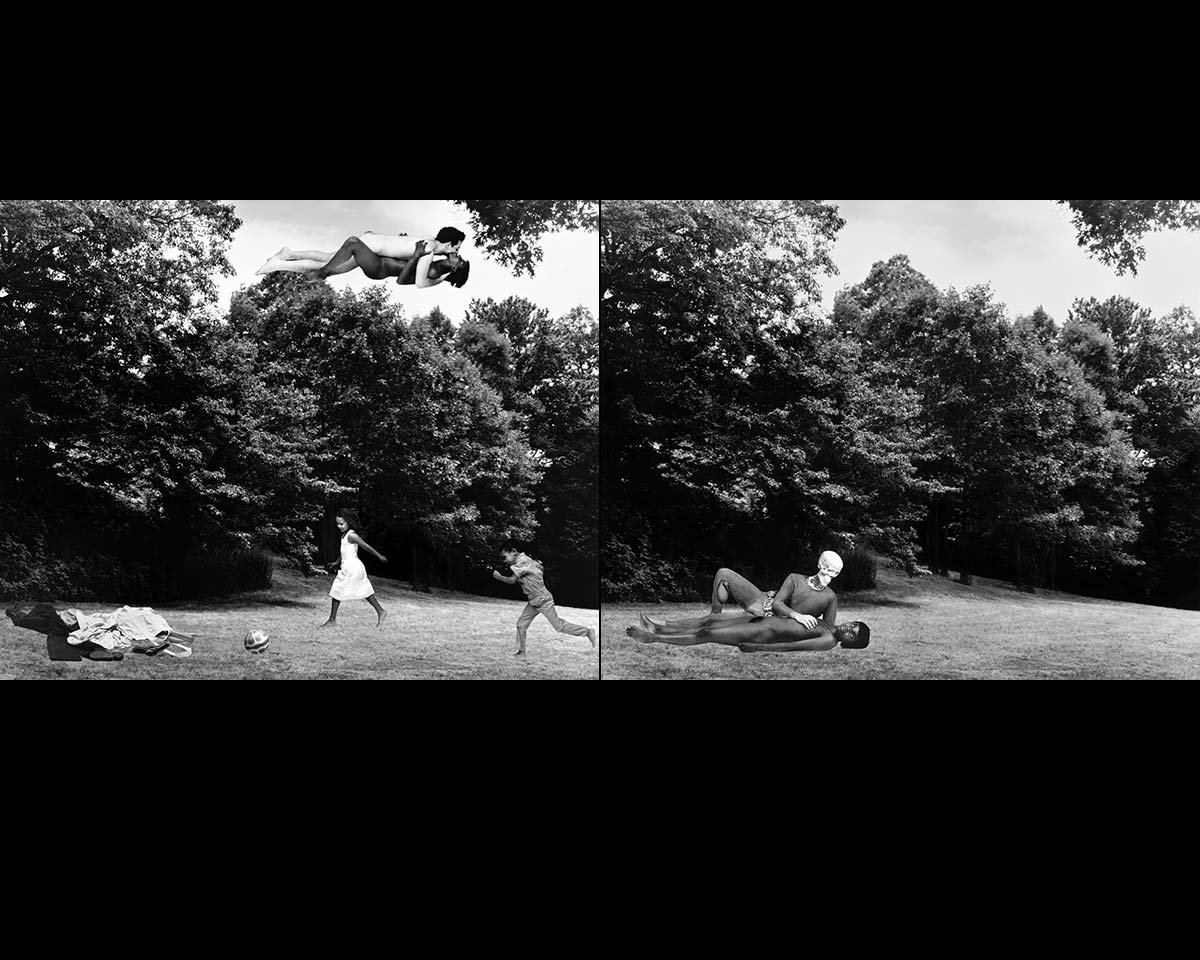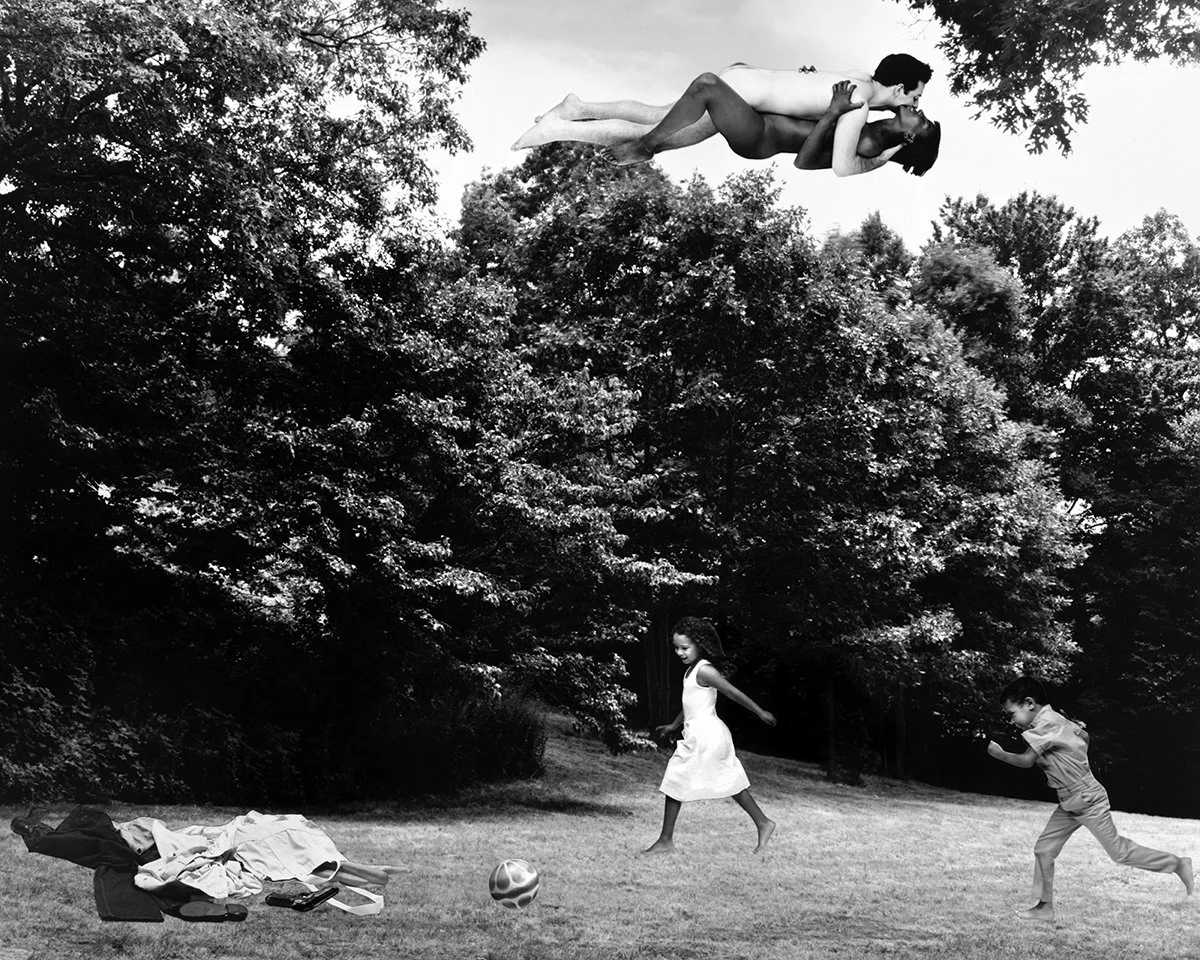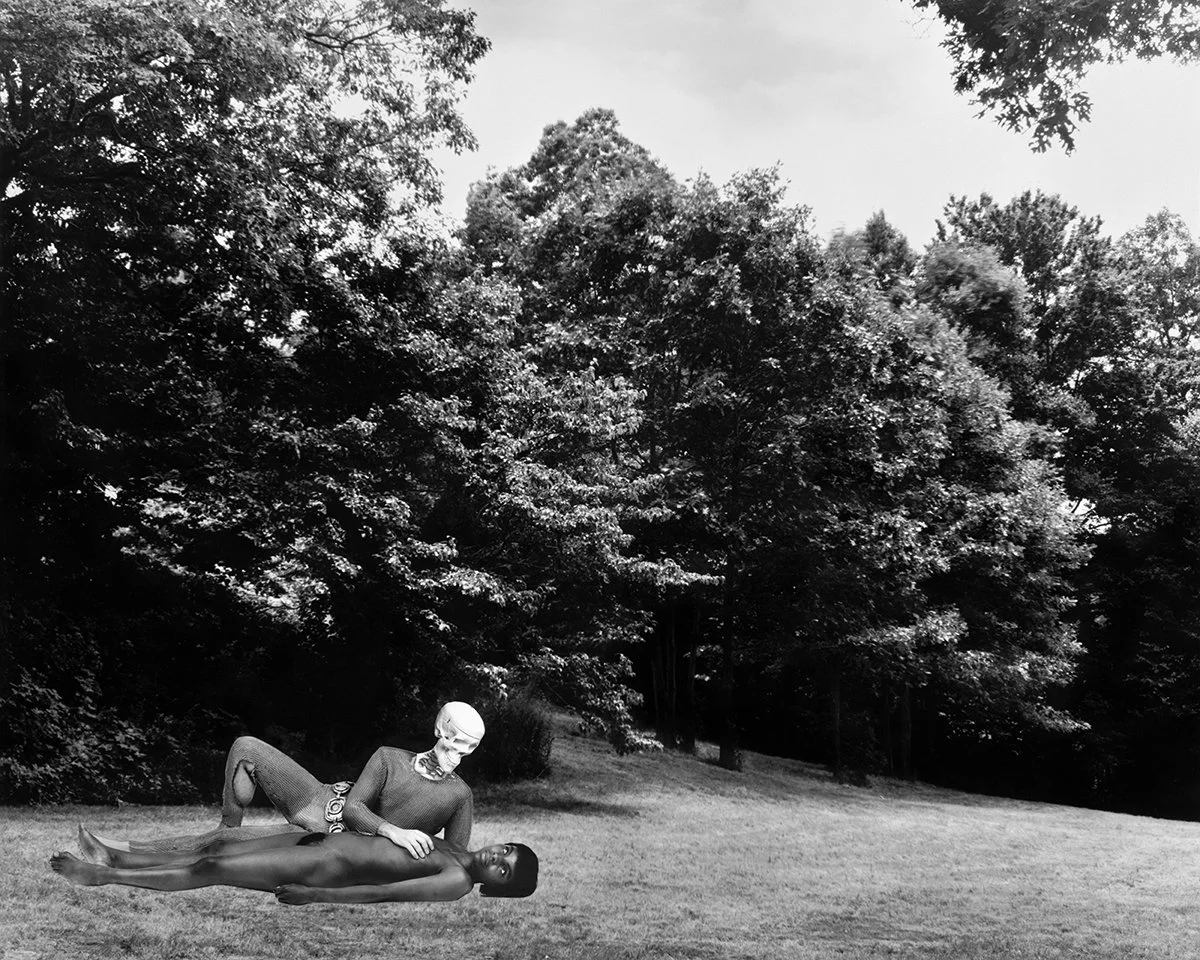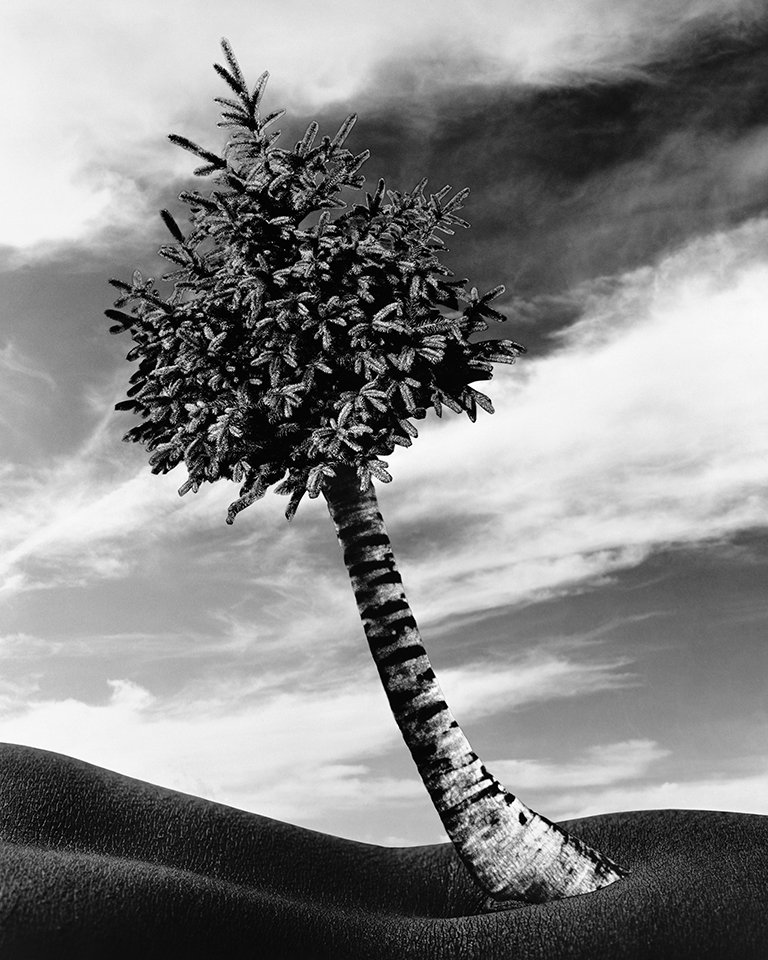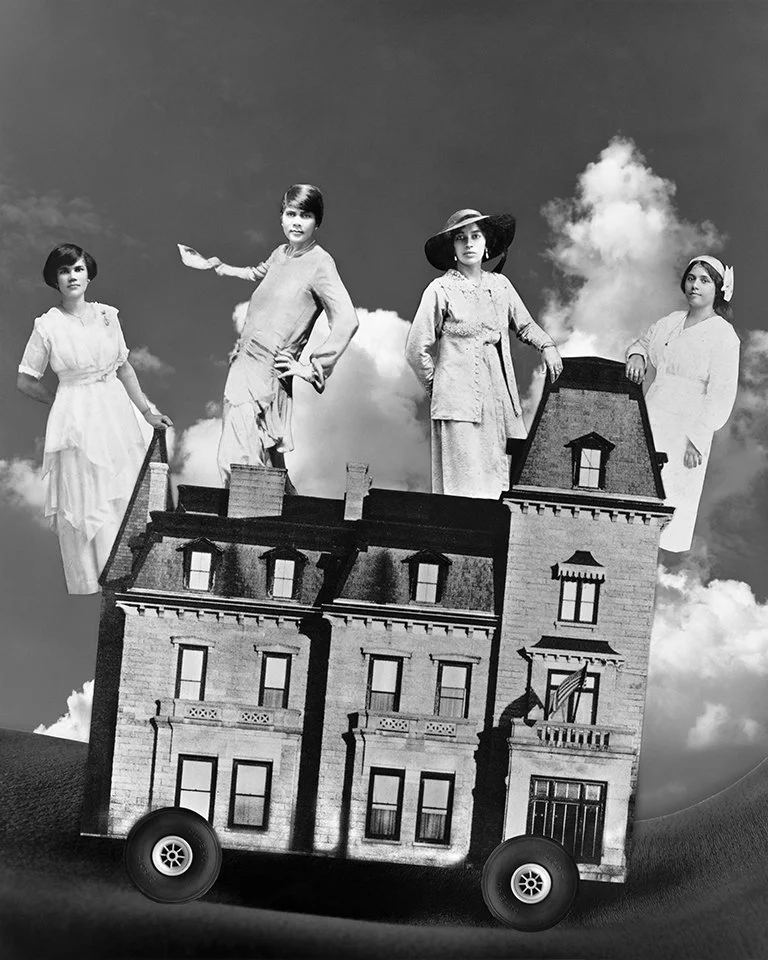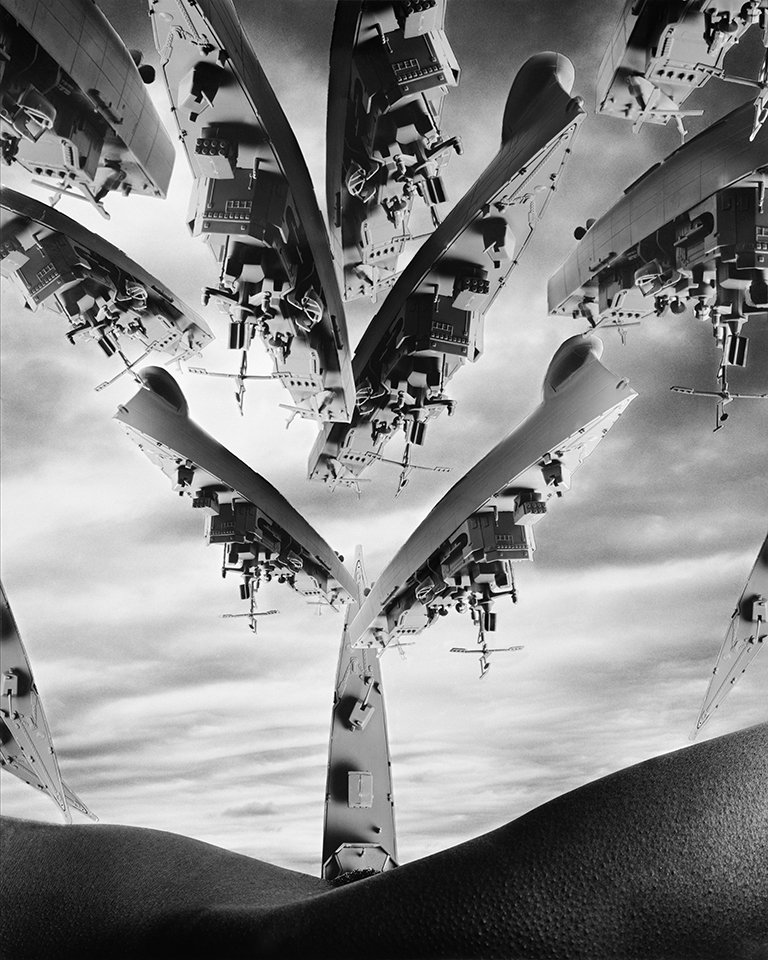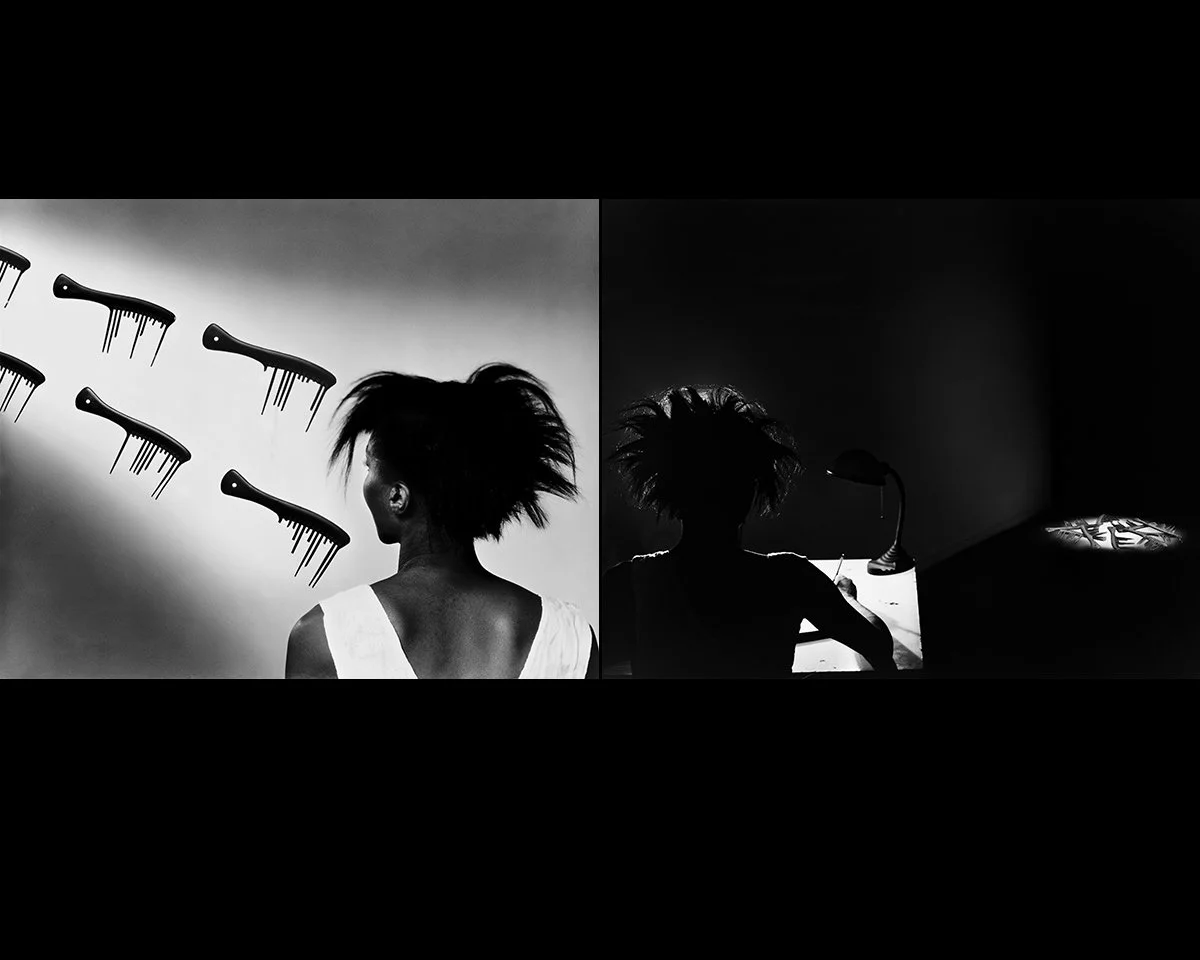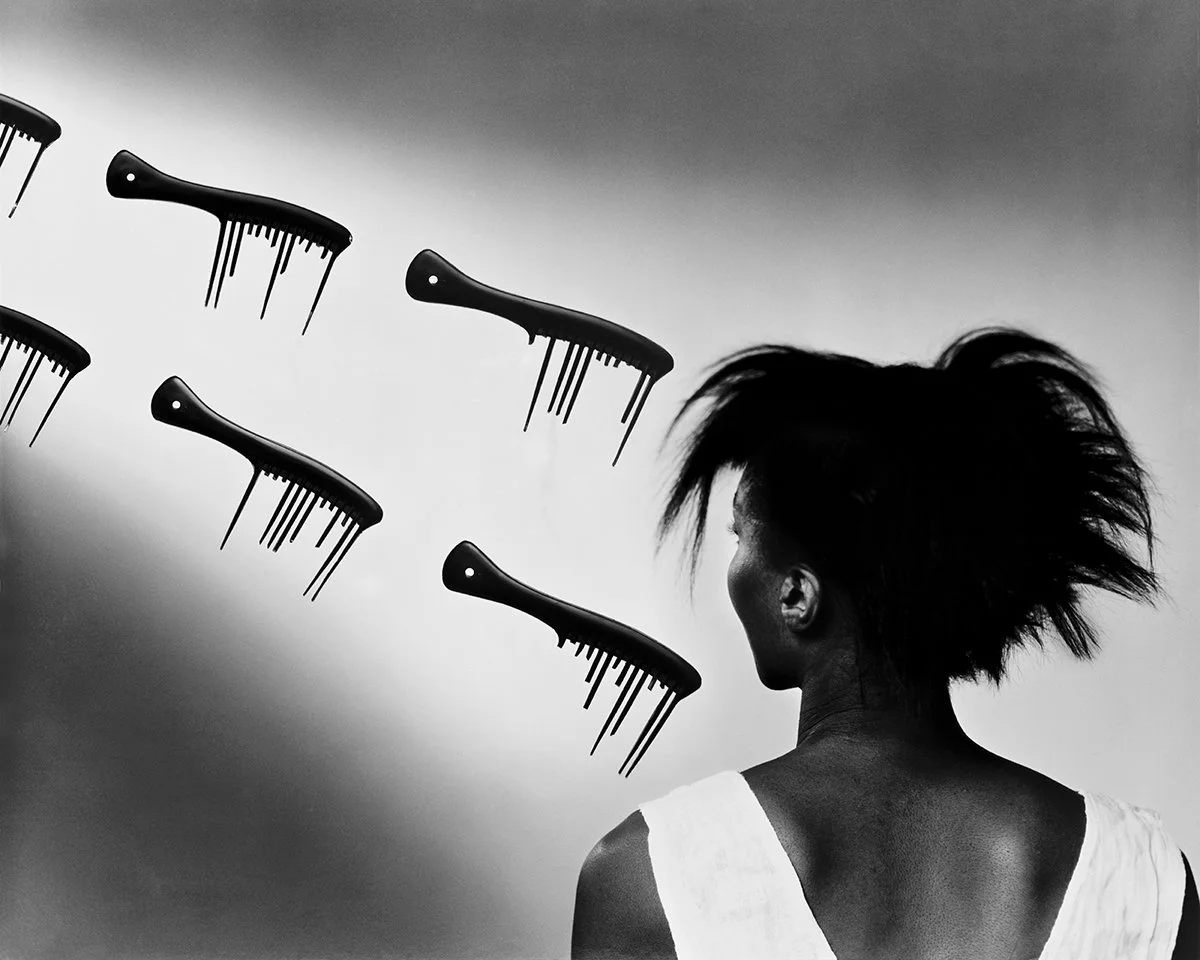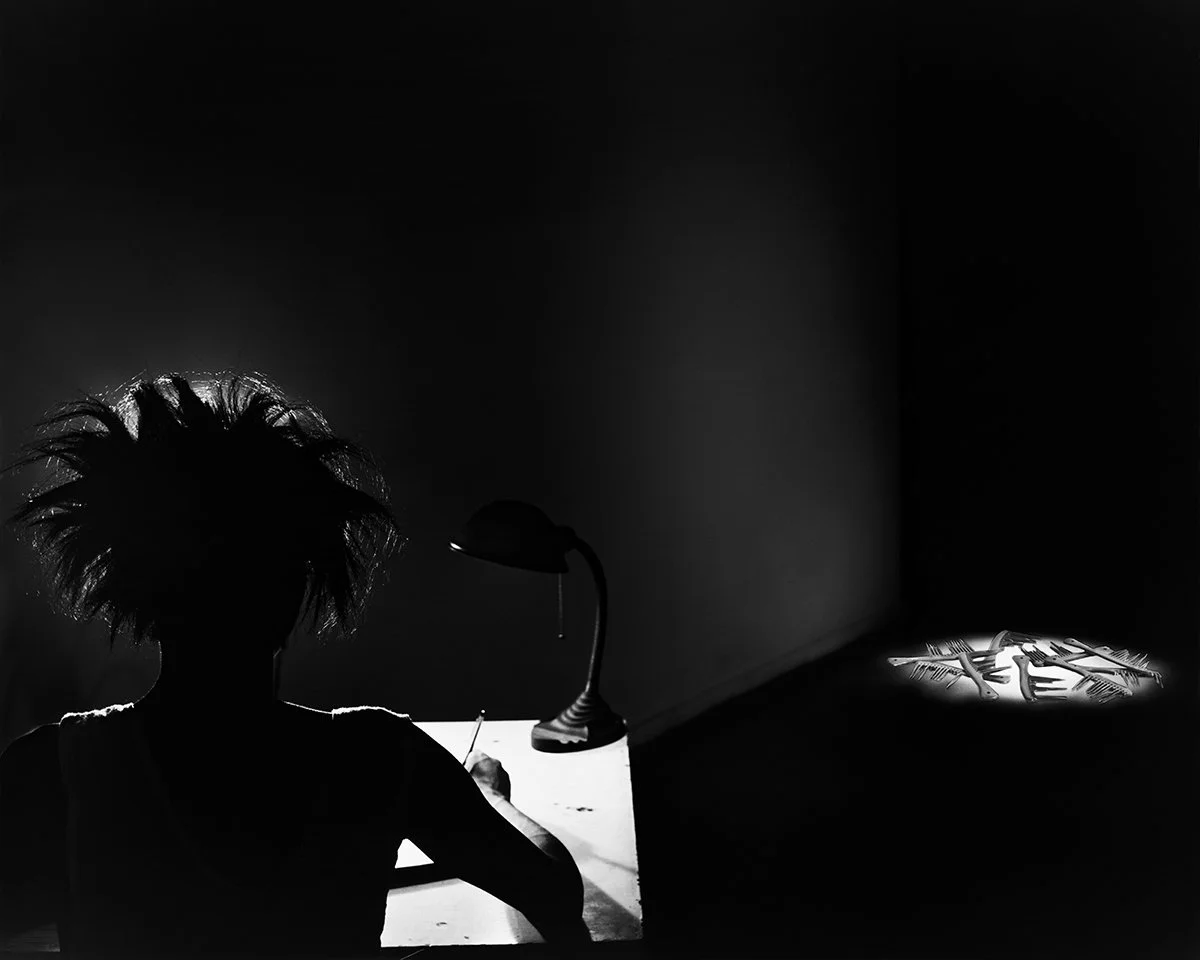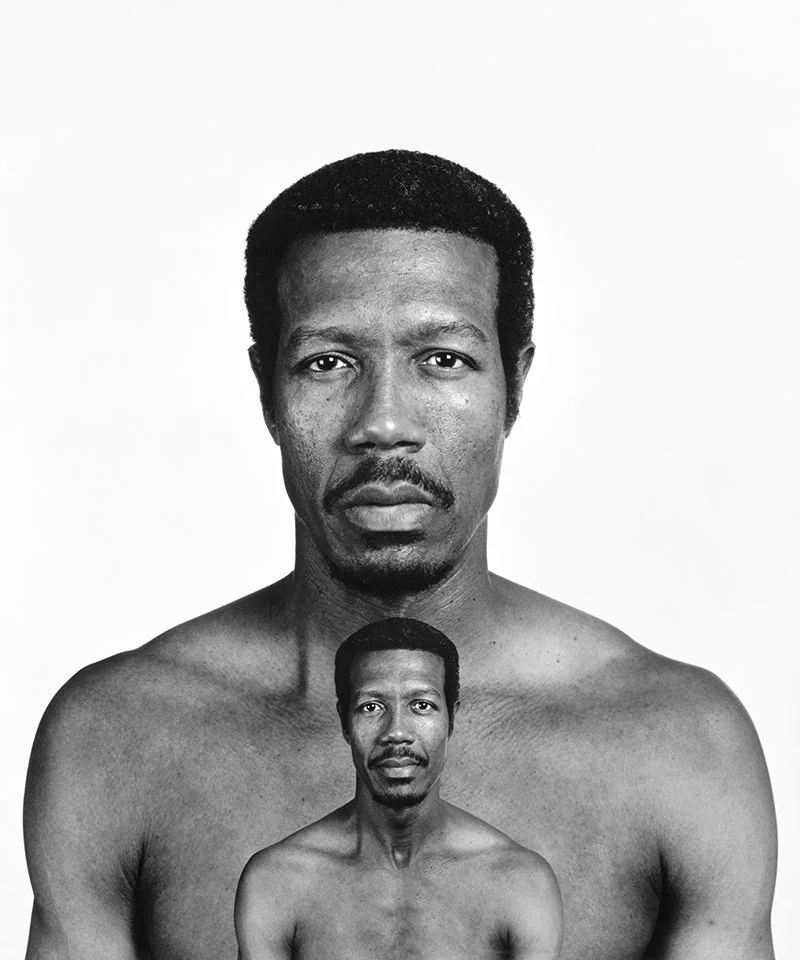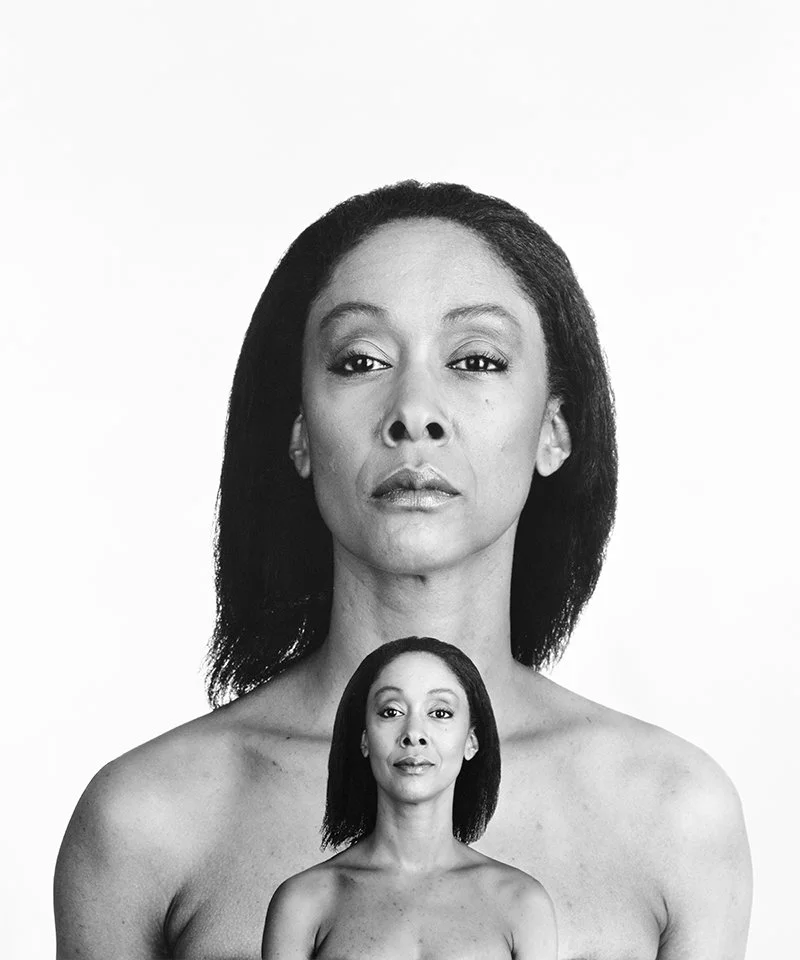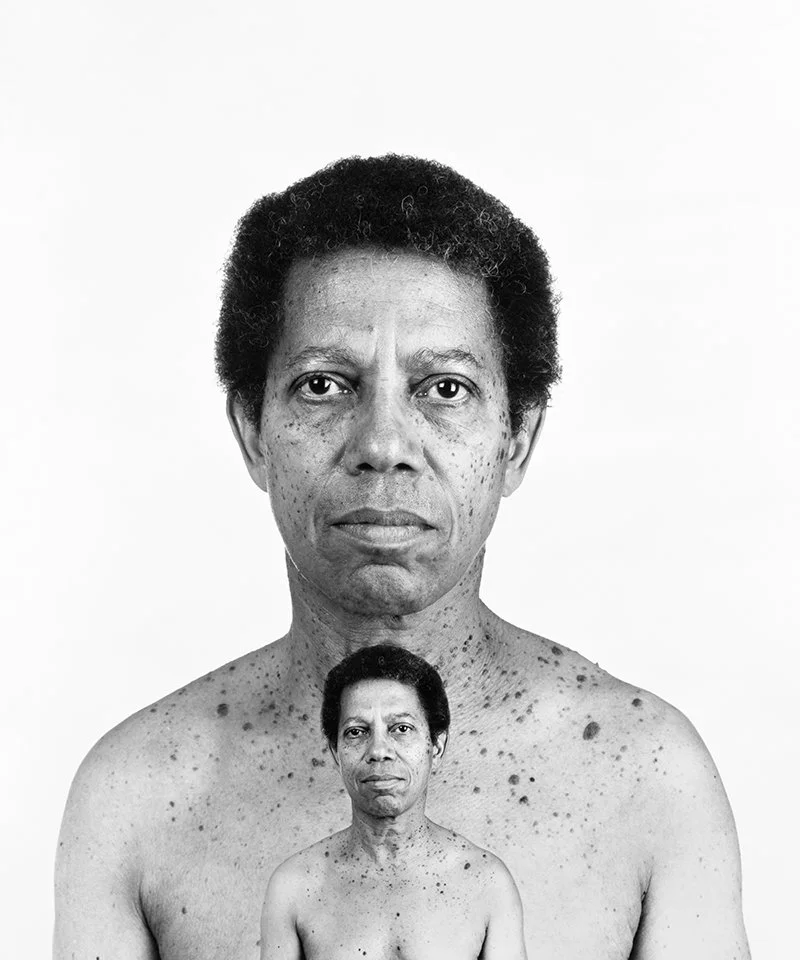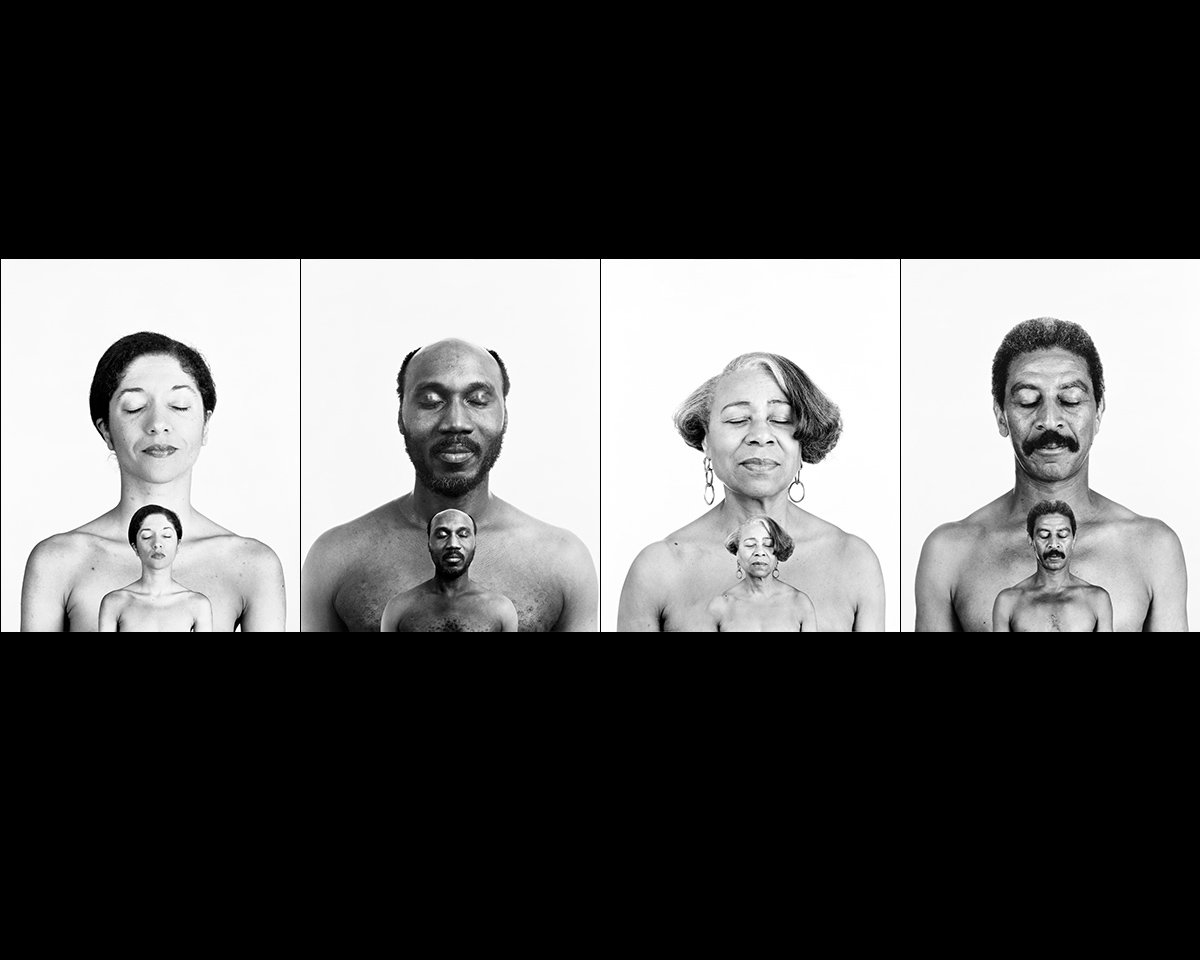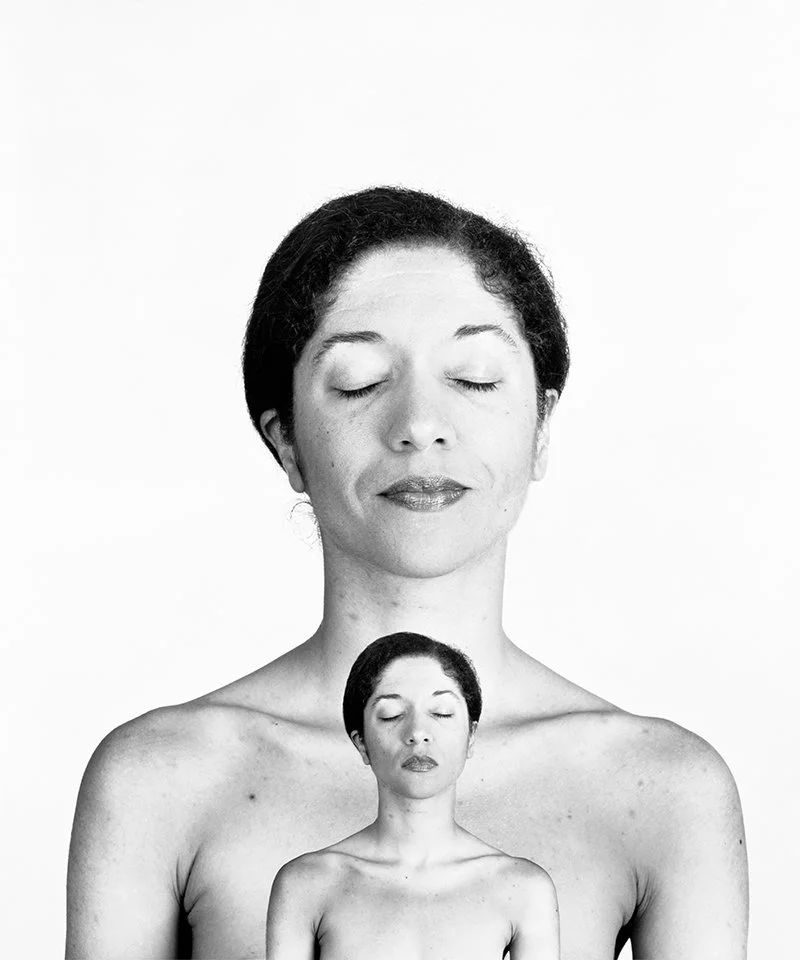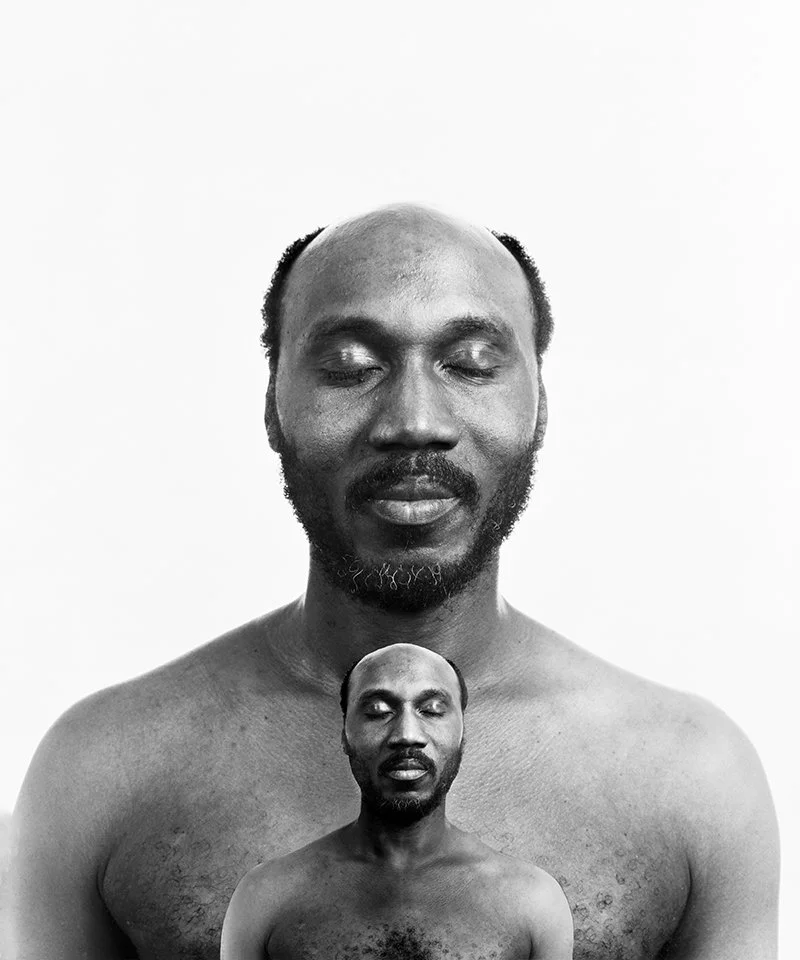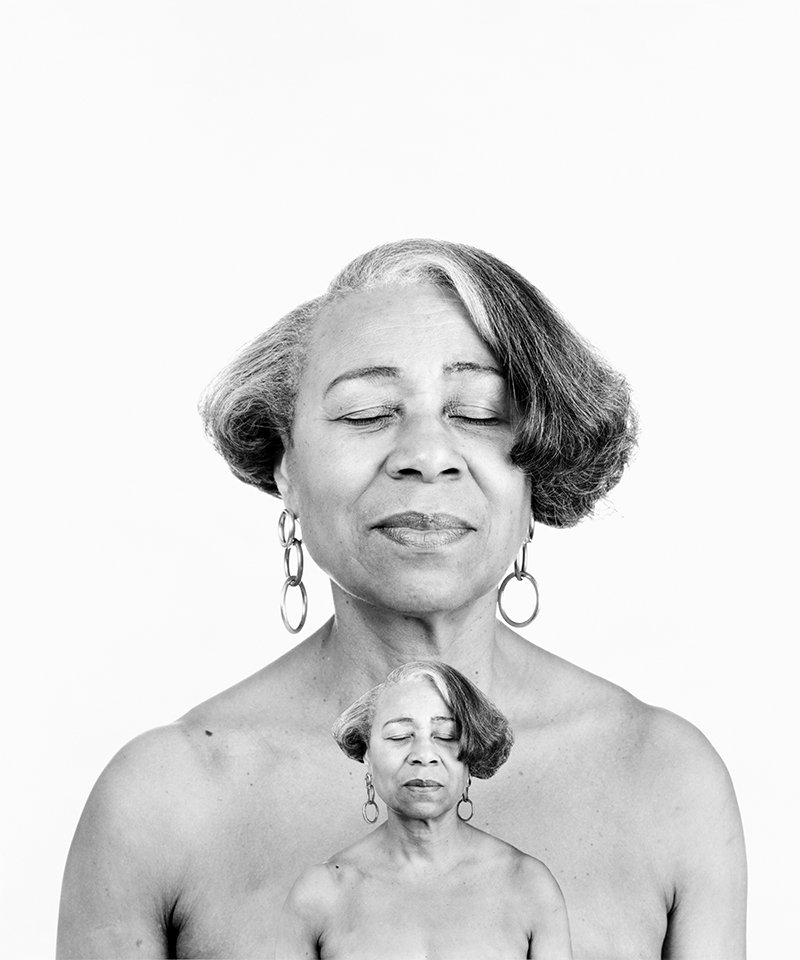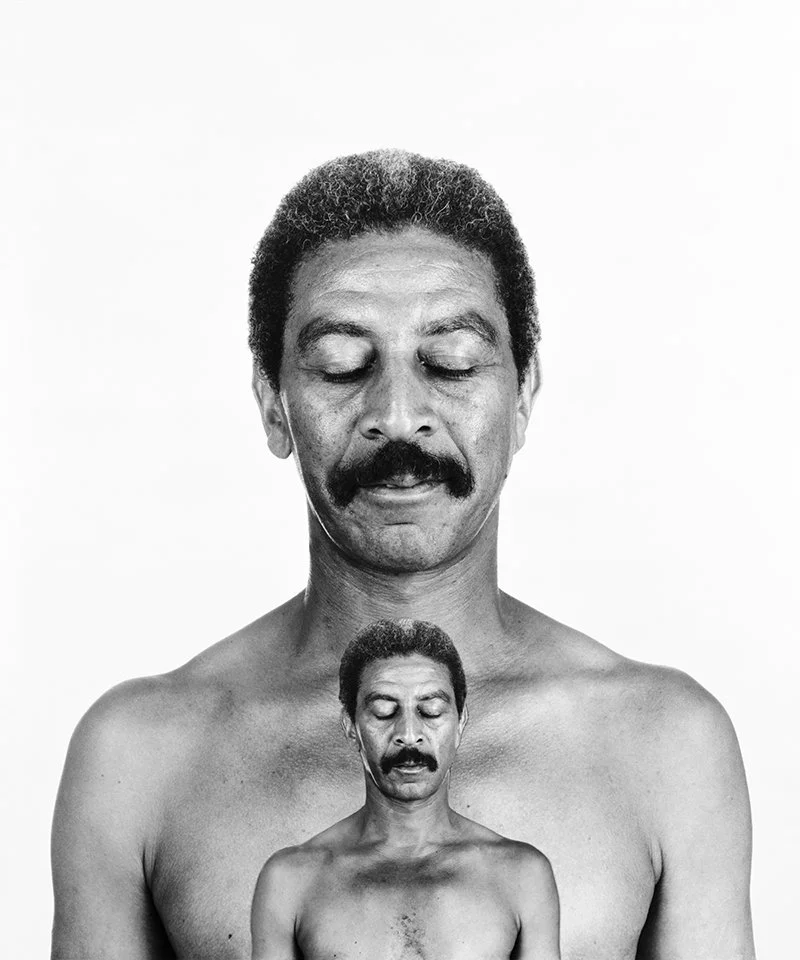LORRAINE O’GRADY, BODY IS THE GROUND OF MY EXPERIENCE
“BodyGround, shorthand for Body Is the Ground of My Experience, refers to the photomontages produced by O’Grady for her first one-person exhibit, at INTAR Gallery, NYC, Jan 21–Feb 22, 1991. The phrase doesn’t name a series — the works were unrelated — but rather the concern shaping O’Grady’s writing, thinking, and art-making at the time. The photomontages reprised several ideas from Rivers, First Draft in still form. Her move from performance to the wall had financial, personal, and theoretical motives. The work was growing both more direct and more complex and needed repeated viewings.
During her absence from the art world, O’Grady had become concerned about postmodernism’s over-simplifications which she felt re-located subjectivity away from the body to history in a way conveniently serving those in power. For while the body undoubtedly received history’s effects and was shaped by them, it was also, in an excess, the location of resistance. To make the point, her new photomontages — made the old-fashioned way just before Photoshop — eschewed both her earlier work’s layered beauty and postmodern photography’s dry formalism. Instead, they employed a psychological literalness reminiscent of Surrealism. In the Gaze and Dream quadriptychs, the bodies schematically enact both subjectivity’s stunting by history and latent resistance to it. And a group of three images, including The Strange Taxi and The Fir-Palm, employ a black body as a literal ground on which history acts but is unexpectedly modified.
O’Grady had not anticipated the intensely negative response, especially from white male viewers, to The Clearing, a diptych showing black and white bodies in what director John Waters calls “the last taboo.” One white male Harvard professor told her it was difficult to look at because it showed “how erotic domination is.” During this period, O’Grady experienced more success, especially with female audiences, via writings such as “Olympia’s Maid” and the articles in Artforum.” - Lorraine O’Grady
